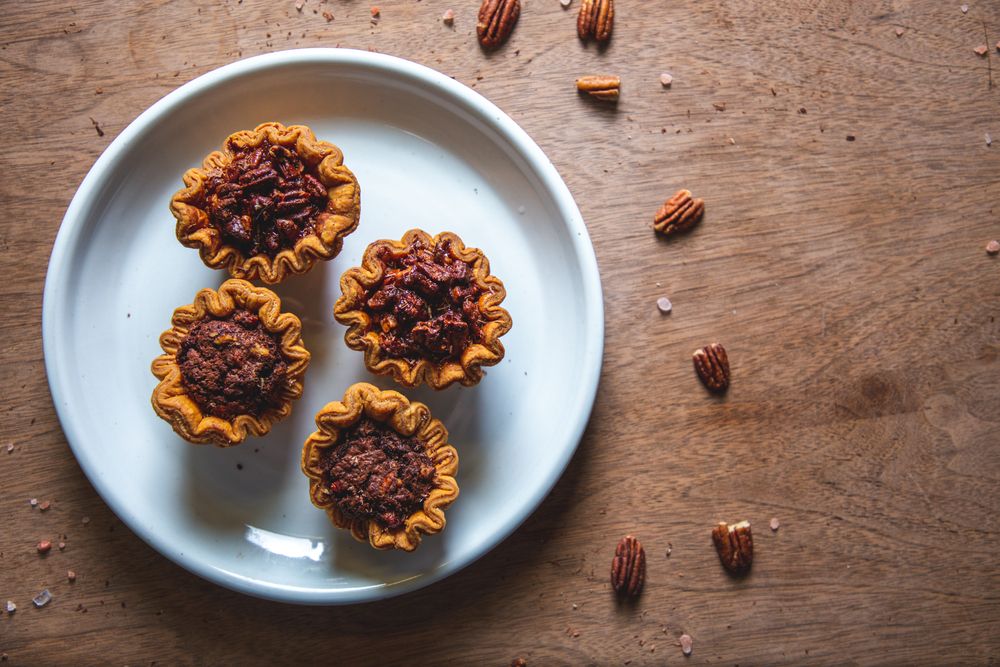
The streets are aglow with twinkling lights, shops are brimming with gift ideas, and grocery aisles are packed with holiday baking and cooking essentials—it's truly the most magical time of the year!
However, the holiday season also brings a flood of rich, indulgent, and calorie-dense meals, drinks, and desserts, making it challenging to maintain a balanced diet. Don’t worry—I’m not here to play the Grinch and tell you to skip all your holiday favorites. You can absolutely savor them in moderation without derailing your health goals. That said, indulging in Grandma's cookies paired with spiked eggnog every night in December might not be the best choice for staying on track.
As a dietitian, there are a few popular holiday foods I tend to avoid. But if these happen to be your favorites, that’s completely okay—just enjoy them mindfully, keep portions in check, and pair them with healthier choices. Below, I’ve highlighted five holiday foods I skip, along with tips to help you navigate the festive season more healthfully. For even more ways to stay on track this holiday season, check out 5 Delicious Holiday Recipes Under 500 Calories That Won’t Derail Your Weight Loss.
Holiday Cookies

Holiday cookies are everywhere this time of year, and there’s nothing quite like a warm, gooey chocolate chip cookie to bring on the festive cheer. But if you’ve ever been gifted a box of cookies or lingered around the dessert table, you know how hard it is to stop at just one.
The problem is, indulging in several cookies at once can quickly push you over the daily recommended limits for added sugar and saturated fat. This can lead to blood sugar spikes and increase your cholesterol levels, especially since most cookies are made with butter, sugar, and refined flour—ingredients that offer little nutritional value. To make matters worse, many cookies are oversized, like Crumbl cookies, which can pack 600 to 800 calories per cookie.
To enjoy holiday cookies more healthfully, focus on portion control. If you love baking, try reducing the sugar in your recipe by a third—you likely won’t notice the difference—and swap butter for healthier fats like canola oil or nut butter. You can also use whole-wheat flour instead of all-purpose flour to add more nutrients and fiber to your treats.
Eggnog

Eggnog, the rich and creamy holiday classic, makes its annual comeback after an 11-month hiatus. Made with milk, cream, sugar, egg yolks, and sometimes a splash of liquor like rum or brandy, it’s a festive favorite—but also a calorie bomb.
A single one-cup serving of eggnog contains around 400 calories, 20 grams of fat, 12 grams of saturated fat, and 48 grams of sugar—nearly as many calories as an entire meal. It’s also high in saturated fat and provides almost a full day’s limit of added sugar.
Additionally, traditional eggnog recipes use raw egg yolks, which can carry a risk of foodborne illness. If alcohol is added, it becomes an extra source of empty calories, further increasing the calorie count.
To enjoy eggnog healthfully, keep portions small and opt for recipes or store-bought versions made with pasteurized eggs to minimize safety concerns. Savor it in moderation for a festive yet balanced holiday indulgence.
Bacon-Wrapped Appetizers

Bacon often takes center stage on holiday tables, whether served at breakfast or wrapped around appetizers like mini hot dogs (pigs in a blanket), hunks of cheese, buttery croissants, or even fruit.
While undeniably tasty, bacon is high in unhealthy fats. If you’ve ever cooked it, you’ve seen the amount of oil left behind in the pan. A 3-ounce serving contains nearly 400 calories, 30 grams of total fat, 10 grams of saturated fat, and 1,430 milligrams of sodium. Alongside its high fat content, bacon's significant sodium levels can raise concerns for blood pressure.
Add bacon to a hot dog, cheese, or croissant, and the calorie, fat, and sodium content only climbs higher. For instance, one pig in a blanket has 264 calories, 17.7 grams of fat, 16 grams of carbs, and 602 milligrams of sodium.
If you’re a bacon lover, enjoy it mindfully by sticking to one or two slices and skipping the extras it’s often wrapped around. This way, you can savor the flavor without overloading on calories, fat, and sodium.
Fudge

Fudge, often gifted in beautifully wrapped boxes, is a holiday favorite with endless variations—from peanut butter swirls to crushed candy cane toppings.
You might think fudge is healthy because it’s chocolate-based, but in reality, its primary ingredients are sugar, cream or milk, and butter. Eating just a few squares can quickly max out your discretionary calorie limit for the day. For example, one ounce of fudge contains 123 calories, 3.8 grams of fat, and 20 grams of sugar. With its high sugar and fat content, fudge offers little nutritional value.
To enjoy fudge without overindulging, keep portion sizes small. If you’re craving chocolate, consider swapping fudge for a piece of dark chocolate, which is lower in sugar and provides more health benefits.
Pecan Pie

Pecans, no doubt, are a nutritional powerhouse—rich in heart-healthy unsaturated fats, dietary fiber, and protein. However, when baked into a pie filling packed with butter, sugar, and sweeteners like corn syrup or molasses, a single slice of pecan pie can rival the calorie count of an entire meal.
One slice contains 541 calories, 22.2 grams of total fat, 3.5 grams of saturated fat, 79 grams of carbohydrates, and 33.5 grams of sugar. Add in the buttery, refined flour crust and popular toppings like whipped cream or ice cream, and it becomes a calorie-loaded indulgence.
If pecan pie is your holiday favorite, savor it by opting for a small slice and skipping the extra toppings to help keep your calorie intake balanced.

